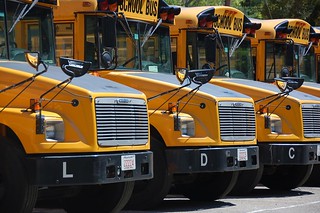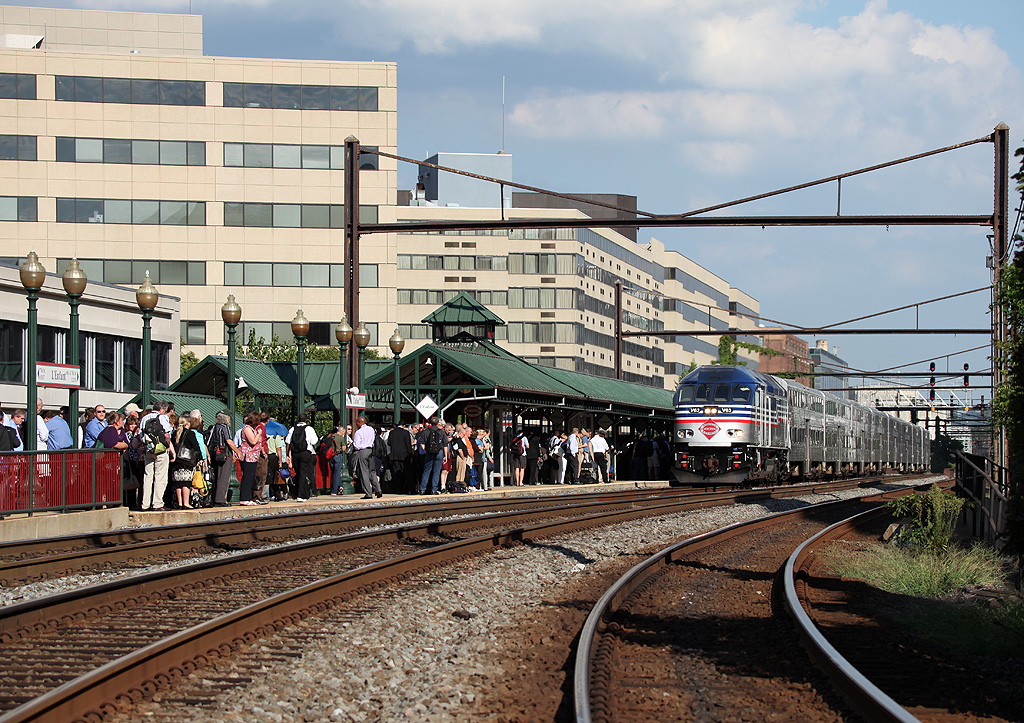 |
| Photo by WMATA. |
This shutdown, one of 15 planned “safety surges” of major Metrorail infrastructure repairs set to occur over the next year, will cause the greatest disruption to Prince George’s County riders. More than 20,000 people commute daily between Prince George’s County and downtown Washington, DC, or northern Virginia on the OR/BL/SV lines. About 5,000 additional commuters east of the Anacostia River (EOTR) in the District’s Ward 7 also rely on these lines. Thus far, however, county and District officials have not yet communicated any concrete plans for how they will assist these impacted individuals.
Metro had originally scheduled this shutdown for mid-August. But the agency had to move up this project in response to a May 11 directive from the Federal Transit Administration, which told Metro to prioritize certain repairs, including at a junction point on the elevated tracks east of the Stadium-Armory station.
County and District Officials Must Develop Mitigation Plans Now
With less than a month left before this major shutdown, local officials are running out of time to come up with plans to avoid a major commuter disaster for EOTR residents. We need a strategy, and we need it now.
Earlier this month, Prince George’s Urbanist strongly urged Metro to work with MARC, CSX, and/or Amtrak to develop a temporary commuter rail shuttle between Deanwood and L’Enfant Plaza along the old Baltimore & Potomac Railroad lines that parallel parts of the Orange Line. WMATA’s alternate board member for Prince George’s County, Malcom Augustine, indicated Metro was exploring this option; however, we have not received any further updates from Metro or MARC officials. Given the newly truncated timeline for this OR/BL/SV segment shutdown, it is unclear whether that shuttle could even be established in time.
In response to inquiries late last week by Prince George’s Urbanist, a spokeswoman for the county’s Department of Public Works and Transportation (DPW&T), Paulette Jones, indicated that the agency was still reviewing the revised SafeTrack plan but expected to have additional information to share in the coming days. Specifically, we asked DPW&T the following questions (among others):
- Has DPW&T been in discussions with the DC Department of Transportation (DDOT) and Maryland’s State Highway Administration (SHA) about coordinating the dedication of bus lanes (e.g., along Central Ave and East Capitol St, Addison Rd and Silver Hill Rd, and Pennsylvania Ave)?
- What is the current capacity of the county’s local bus system (“TheBus”) to provide mitigation during SafeTrack, and has DPW&T explored expanding current capacity?
- Who specifically at DPW&T is coordinating the mitigation efforts?
 |
| Photo by ifumth on Flickr. |
To Spur Things Along, We Should Also Suggest Ideas
Hopefully, we will have additional information to report from DPW&T soon. In the meantime, perhaps we should help crowdsource some ideas for them. Here are some ideas that immediately come to mind:
►Direct (Nonstop) Bus Shuttles to Eastern Market Along Dedicated Lanes: DPW&T should urge Metro to alter its current shuttle bus plan so that it provides free direct shuttle service for EOTR commuters between Benning Road or Minnesota Ave stations and Eastern Market station. Currently, Metro is proposing a shuttle that would make intervening stops at Stadium-Armory and Potomac Avenue, which will both be closed for rail service during the shutdown.
Given the high number of EOTR commuters who will be depending on these shuttle buses, it is highly unlikely that there will be additional space to pick up additional riders at Statium-Armory or Potomac Avenue. Additionally, stopping at these stations will only further delay EOTR commuters from reaching a working Metrorail station. Besides, there are already ample Metrobus routes that can connect riders at those two stations to downtown Washington. And the Potomac Avenue station is also in easy walking or biking distance to the Eastern Market station.
To facilitate the journey, these buses should travel in dedicated lanes along East Capitol Street, 14th Street, and South Carolina Avenue.
►Direct Bus Shuttle Between Addison Road and Suitland: In addition to the OR/BL/SV shuttles provided from Minnesota Avenue and Benning Road stations, Metro and DPW&T should establish a free shuttle bus service from Addison Road station to Suitland station. The shuttle should run in dedicated lanes, where possible, along Addison Road South, Walker Mill Road, and Silver Hill Road.
►Nonpeak Fares For Any Impacted Rail Line: To encourage continued ridership and goodwill, WMATA should waive peak fares for any segment of the Metrorail system that is projected to experience a greater than 20 percent reduction in peak service due to SafeTrack.
 |
| Photo by Chris Devers on Flickr |
What other ideas do you have? Please leave them in the comments.
(This article was modified on 05/24/2016 to include additional suggestions.)





